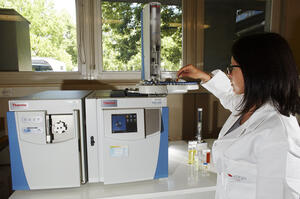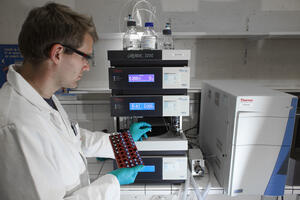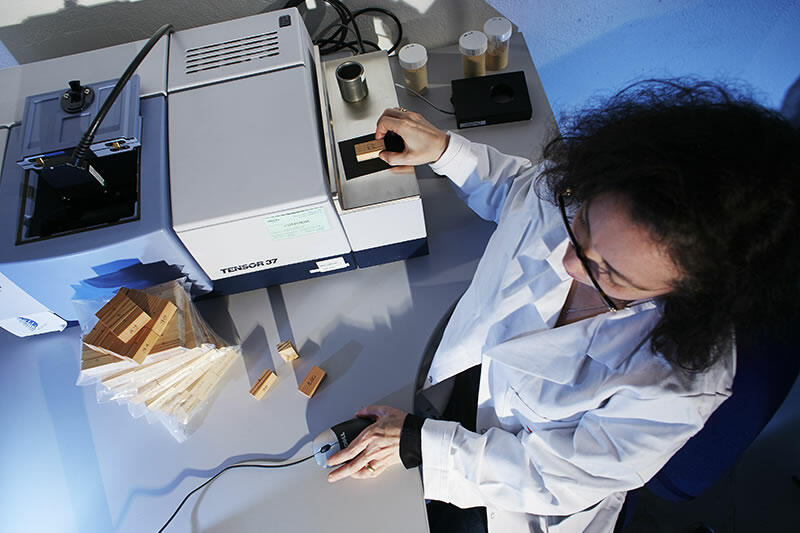
Services
Testing Laboratory
Characterisation of lignocellulosic biomasses
Chemical composition and structure
- To determine the chemical composition of plant biomasses (wood, annual plants, crop residues…)
- To characterise and observe the structure of the material
- To allow evaluating the most appropriated valorisation ways
General informations
Each biomass has specific properties. Their chemical composition, structure and the organisation of the fibres that make up the plant are important criteria in determining the possibilities for recovery.
Various analysis methods are used to measure :
- The chemical composition, by measuring extractives, lignin, polysaccharides (cellulose and hemicelluloses) and mineral content,
- The biomass quality by measuring moisture content, density, mass volume and colour,
- The structure of the biomass by separating the constituent elements and analysing the fibres obtained, using optical and electron microscopy.
Technical data
Chemical composition
Lignocellulosic biomass is first ground to obtain sawdust. This can be done cold to avoid losing volatile compounds.
- The extractives content is determined by extracting the sawdust with various solvents such as water and acetone using an ASE (Accelerated Solvent Extraction) extractor. Steam extraction can be used to determine the volatile extractives content.
- Lignin content is obtained by determining insoluble lignin in concentrated sulphuric acid (AIL - Acid Insoluble Lignin or Lignin Klason) and measuring soluble lignin (ASL - Acid Soluble Lignin), according to ISO standard 21436
- The polysaccharide content is obtained by acid hydrolysis and HPLC analysis of the constituent sugars obtained according to ISO standard 21437. The cellulose and hemicelluloses content can then be calculated.
- The mineral content is the residue obtained after calcining at 525°C (with carbonates) or 900°C (without carbonates) of a biomass sample (according to ISO 1762 and ISO 2144 respectively).
Biomass quality
- The humidity or the dry matter content is obtained by difference of weights after drying at 105°C according to ISO standard 638.
- The infra-density of wood is measured on wood slices with the Archimède principle.
- The mass volume is measured by determination of the dry weight of a given volume of biomass.
- The biomass colour is determined by its brightness and its trichromatic coordinates (Lab) obtained by spectroscopy of the sawdust.
Biomass structure
From ultra-thin slices of biomass embedded in an epoxy resin, it is possible to examine the ultrastructure of fibres wall with different dying methods combined to transmission electron microscopy.
 |
 |
|
 |
 |
Also to be seen
Consultancy Diagnosis
Centre of Excellence
Testing Laboratory
Laboratories
Platforms